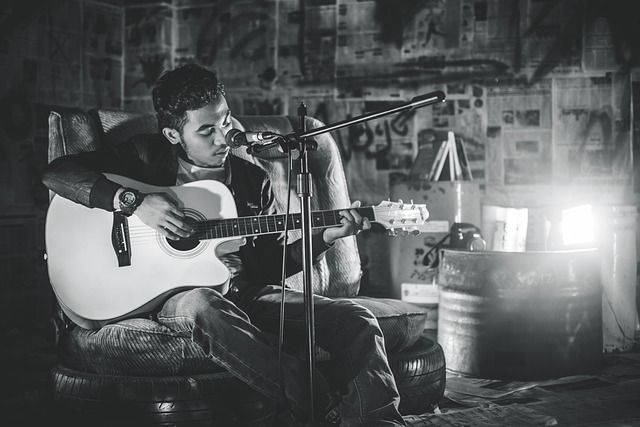Indian rap is growing every single day, and people now love it more than ever before. Among all the talented artists, there’s one question that fans keep asking: Who is the Rap God of India? This title isn’t just about being good at rap. It’s about leading a movement, being an inspiration, and taking Indian hip-hop to every corner of the world.
In this blog, we’ll explore everything about Indian rap—how it started, how it grew, and who deserves to be called the Rap God of India. Let’s dive in!
The Early Days of Rap in India
Rap in India began slowly, with small steps. Back in the 90s, Bollywood songs introduced rap to Indian audiences. These raps were often playful and part of movie soundtracks. For example:
- Songs like “Aati Kya Khandala” brought a fresh vibe to Bollywood.
- Artists like Baba Sehgal started experimenting with rap, creating fun tracks.
However, this was just the beginning. Real rap—the kind that tells stories of struggles and triumphs—was yet to come.
Indian Hip-Hop Takes Shape
In the early 2000s, rap in India became more than just entertainment. Young artists from cities like Mumbai, Delhi, and Bengaluru began using rap to express their thoughts. They talked about real-life issues—poverty, inequality, dreams, and heartbreaks. This movement was called the Indian hip-hop revolution.
Underground Rap Scene
The underground rap scene in India grew quietly but powerfully. Artists rapped in their local languages, making their music relatable. They recorded songs in small home studios and performed in local clubs. This underground movement was raw, real, and full of energy.
What Makes Someone the Rap God of India?
Before we decide who is the Rap God of India, let’s understand what it takes to earn this title. The Rap God is someone who:
- Writes Powerful Lyrics: Their words touch people’s hearts and stay in their minds forever.
- Stands Out: They bring something fresh and unique to Indian rap.
- Leads the Way: They inspire other rappers and fans.
- Reaches the World: They take Indian rap beyond borders.
Meet the Top Indian Rappers
Here are some of the most popular and talented rappers in India. Each one of them has a strong fan base, unique style, and an incredible story to tell.
1. DIVINE: The Gully Boy
If there’s one rapper who brought Indian hip-hop to the spotlight, it’s DIVINE. Hailing from the streets of Mumbai, his song “Mere Gully Mein” became an anthem for the youth. DIVINE’s rap is raw and honest, reflecting the struggles of people living in Mumbai’s slums.
Why DIVINE Stands Out:
- He speaks from the heart.
- His rise to fame inspired the movie Gully Boy, which made Indian rap mainstream.
- He has collaborated with international artists like Nas.
2. Badshah: The Superstar
Badshah is known for creating catchy rap songs that people love to dance to. His tracks like “DJ Waley Babu” and “Paagal” have broken records.
What Makes Badshah Special:
- He mixes rap with fun beats, making his songs super popular.
- He has millions of fans worldwide.
3. Raftaar: The Speed Master
Raftaar is fast, lyrical, and full of energy. His rap often has a deeper meaning, tackling topics like self-respect, growth, and social issues.
Raftaar’s Highlights:
- He has worked with Bollywood and independent artists.
- He judges rap reality shows, helping young rappers grow.
4. Kr$na: The Lyricist
Kr$na is known for his smart lyrics and powerful delivery. He often writes diss tracks that show off his wordplay and confidence.
Why Fans Love Kr$na:
- His rhyme schemes are complex and unique.
- His songs often go viral in the underground rap scene.
Today, social media is a big reason why Indian rap has grown so fast. Platforms like YouTube, Instagram, and Spotify allow artists to share their music with the world. Fans can connect with rappers directly, making the bond stronger.
- YouTube: Most Indian rappers upload their music videos here. It’s also the home of diss tracks!
- Instagram: Short rap videos and live sessions help artists stay close to their fans.
- Spotify: Playlists like “Desi Hip-Hop” promote new rap songs every week.
How Indian Rap Inspires Youth
The Rap God of India is not just a rapper—they’re an inspiration for millions. Rap in India talks about:
- Real-Life Problems: Poverty, inequality, and everyday struggles.
- Dreams and Aspirations: Stories of how people fought against odds to achieve their goals.
- Cultural Pride: Showing the beauty of Indian languages and traditions through rap.
Challenges for Indian Rappers
Being a rapper in India isn’t easy. Even the best rappers face challenges like:
- Stereotypes: Many people still think rap is “western” and not part of Indian culture.
- Lack of Support: Independent rappers often struggle to find good studios or sponsors.
- Censorship: Rap that talks about sensitive topics sometimes gets banned or criticized.
International Collaborations: Taking Indian Rap Global
Indian rappers are now working with international artists, which is helping them reach new audiences. For example:
- DIVINE’s track with Nas brought global attention to Indian rap.
- Badshah’s collaborations with international DJs added a fresh twist to his music.
The Future of Indian Rap
The future of Indian rap is bright. With so many talented artists and a growing fan base, Indian hip-hop is set to become one of the biggest music movements in the world. Streaming platforms, rap battles, and new collaborations will continue to push the boundaries of Indian rap.
Conclusion: Who is the Rap God of India?
So, who is the Rap God of India? The truth is, there isn’t just one answer. Artists like DIVINE, Raftaar, Badshah, and Kr$na all bring something unique to the table. Each of them represents a different side of Indian rap—whether it’s raw emotion, lyrical genius, or global appeal.
The Rap God of India isn’t just one person. It’s a title that belongs to every artist who works hard, stays true to their roots, and inspires others through their music.
Related Articles:
For further reading, explore these related articles:
For additional resources on music marketing and distribution, visit Deliver My Tune.






